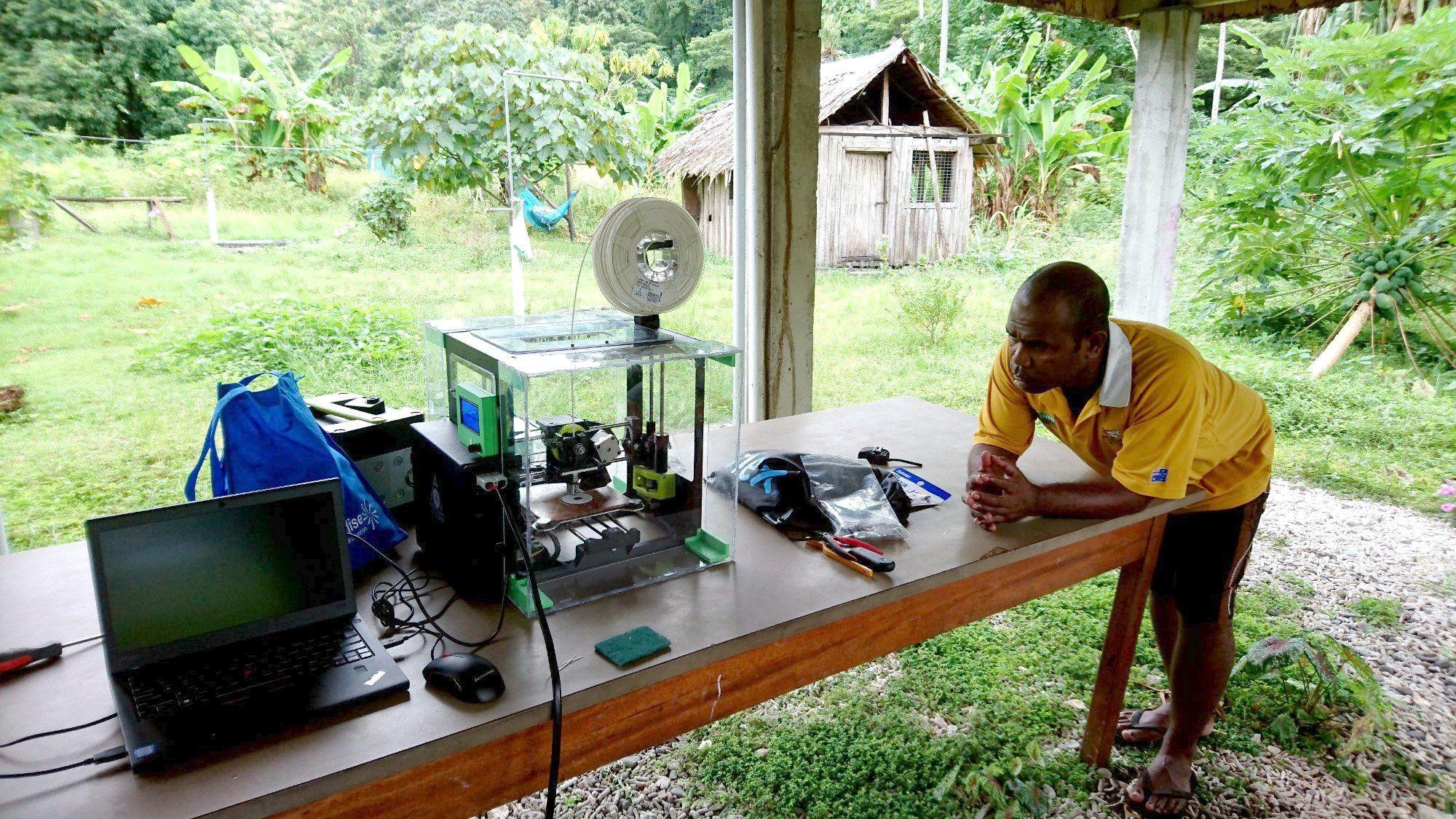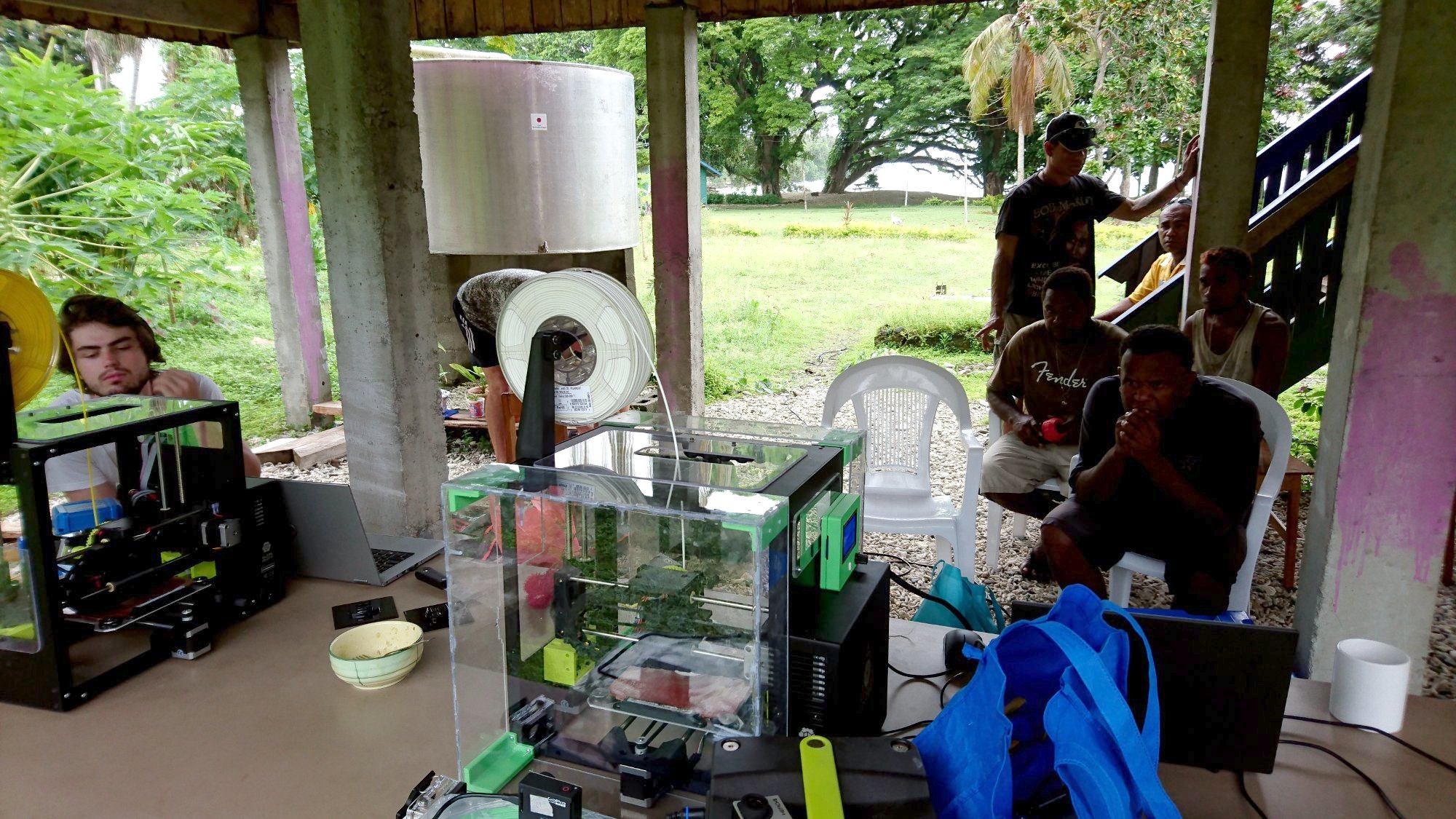As a cyclone raged through the Solomon Islands, a man clutched a running 3D printer to his chest to prevent it from being blown away in the fierce winds. The machine continued printing parts for vital infrastructure while his colleagues held down the solar panels powering it.
That man was Dr. Mazher Mohammed, and that 3D printer was a LulzBot Mini.
“If we’d wanted to test everything in the harshest and most non-ideal circumstances possible – bar doing things underwater – we got them. And that was good, because ultimately these are the conditions the printers would be operating in and we figured if we can do it in a cyclone, high humidity and torrential rain, we can do it pretty much anywhere,” said Dr. Mazher Mohammed, Senior Research Fellow at Deakin University’s School of Engineering.
Environmental Innovation with LulzBot 3D Printers
Issues with acquiring goods and disposing of waste are nothing new to island communities. The citizens of Honiara, the Solomon Islands' capital city, struggled with huge amounts of plastic waste clogging the waterways and killing off marine life. In addition, their access to clean water was extremely limited by leaky, disintegrating infrastructure with no parts to make repairs. The two seemingly distinct problems presented an interesting opportunity in the eyes of Dr. Mohammed, namely uses for his 3D printer.
He and his colleagues teamed up with aid agency Plan International, and local volunteers, to start solving both problems concurrently, turning waste into the needed parts for infrastructure repair. Their process involves grinding waste plastic into rice-sized pellets, which are then converted into 3D printer filament with a portable filament extrusion machine. The team designs pipes, fittings, gaskets, and seals, as needed and prints them on LulzBot Mini 3D Printers. “This kind of 3D technology can be used to rapidly replace broken plastic seals, pipes and other devices essential for water supply or sanitation,” Dr. Mohammed said.
Going with the FLO: Open Source Hardware Enables Extreme 3D Printing
The ultimate goal of this endeavor is to make 3D printing technology available to those in disaster zones and developing countries, particularly those without reliable access to power. 'The important part of this project is its sustainability. Not only will the printer be able to use plastic rubbish found nearby, but it will also run off a solar powered battery,' Dr. Mohammed said. The Open Source nature of LulzBot 3D Printers enabled the team to modify their LulzBot Mini to run directly off a nanogrid system working at 24 volts, bypassing the internal power supply to accommodate a connector for direct solar power.
In his 3D printing success story, Dr. Mohammed cited durability and ease-of-use among his favorite LulzBot Mini features. “After 3D printing during cyclonic conditions using recycled plastics, without a single failed print, I believe the LulzBot Mini [is] an exceptional printer capable of working in the harshest of conditions! We are ready to go out of the box,” he said. “Keep making great printers, LulzBot!!”
Learn How Others Are Improving Lives With LulzBot 3D Printers ➡
All multimedia content licensed CC-BY-SA © Deakin University School of Engineering



